#Grigory Potemkin
Explore tagged Tumblr posts
Text
Date sim with all of Cath's boyfriends WHEN

#russian history#russian empire#history#historical shitpost#Catherine ii#catherine ii of russia#historical memes#Grigory orlov#Grigory Potemkin#Platon Zubov
97 notes
·
View notes
Text
The Giant Bath Tub for Tsar Alexander I (1777-1825)

Babolovo (Babolovka) Palace, a historical building located in the town of Tsarskoye Selo (Tsar’s Village), about 24km south of St. Petersburg, Russia.
This palace was built in towards the end of 18th century AD, during the reign of Catherine II of Russia (Catherine the Great, 1729-1796).
The palace is situated close to Catherine Palace and Alexander Palace, both of which are renowned imperial residences from time of Russian Empire.
In 1780 AD, grounds adjoining that of Catherine Palace were presented by Catherine the Great to Grigory Potemkin, a Russian nobleman who was also the empress’ favourite at that time.
Initially, a temporary wooden palace was built which, according to one source, served as a rendezvous point for lovers.
Between 1782-1785 AD, the building was replaced by a stone one, which was designed by Ilya Neyelov (1745–1793), who also designed the bath pavilions in neighbouring Catherine Park.
This new structure was built in Gothic Revival style and served essentially as a summerhouse. Neyelov’s creation was a single-storey building with seven rooms, each of which gave access to park surrounding the palace and an octagonal tower.
Babolovo Palace was not used for a very long time, as it was abandoned in 1791 AD.
One factor contributing to palace’s demise is its remoteness, which meant that it was very seldom visited. It was only several decades later, during the 1820s, that there was a revival in Babolovo Palace.
It was during this decade that Babolovo Palace was renovated under auspices of Tsar Alexander I, grandson of Catherine the Great.
The tsar is said to have liked the palace very much, and it has been rumoured that it was there that he used Babolovo Palace for his trysts with Sophia Velho, daughter of a court banker.
The most significant change that was made to the palace is perhaps the addition of a colossal bath tub, known also as ‘Tsar Bath.’
One of the most curious objects to be found in this palace is a giant bath made of granite, known as ‘Tsar Bath,’ which was added to building some decades after its construction.
The palace, which is part of Babolovo Park, is in ruins today. Nevertheless, there have been plans to preserve palace from further destruction, as well as to develop park surrounding it.
According to one source, the bath tub was originally a chunk of granite from one of the Finnish islands.
This piece of granite weighed over 160 tonnes and a team of masons, led by Vasily Sukhanov, was given the task of turning the rock into a bathtub.
It took Sukhanov 10 years to get the job done, and the resulting piece of work is a true masterpiece.
The Tsar Bath has a height of 1.96m, a depth of 1.52m, and a width of 5.33m.
The walls of tub are 45cm thick, and its weight was reduced from the original 160 tonnes to 48 tonnes.
8,000 buckets of water (about 12 tonnes) could be contained in this bath.
Given the immensity of the bath, the workers renovating the palace had to first place the tub into its designated room before having the walls and roof constructed.
During WWII, Babolovo Palace was badly damaged. Tsar Bath, however, survived and invading Nazis even attempted to have the bath tub transported back to Germany.
They were, however, unsuccessful and extraordinary object was left where it was.
Babolovo Palace has remained in ruins ever since, although plans have been announced recently for conserving the remains of this structure and to develop the surrounding park.
📍 Babolovsky Palace, St. Petersburg, Russia 🇷🇺
© Ancient Origins
#Babolovo Palace#Tsar Bath#Catherine Palace#Alexander Palace#Tsar Alexander I#Catherine the Great#St. Petersburg#Russia#palace#ruins#russian royalty#1700s#18th century#Grigory Potemkin#Ilya Neyelov#Sophia Velho#Babolovo Park#granite#Vasily Sukhanov#bath tub
29 notes
·
View notes
Text







Catherine the Great (2019)
#catherine the great#catherine the great 2019#tv series#jnfb edits#my screencaps#james northcote#Alexander Bezborodko#helen mirren#Grigory Potemkin#jason clarke#Peter Zavadovsky#thomas doherty#catherinethegreatedit
9 notes
·
View notes
Text
When Russians weren't looting washing machines, toilets, and used underwear from Ukraine in the early weeks of the invasion, they were looting museums.
As a result of the Ukrainian counter-offensive in the summer of 2022, the Russian army was forced to withdraw from the area around Kherson. On November 11, the city was liberated by the Ukrainian army. One of the many consequences of the Russian invasion of Ukraine and the months of turbulence in the Kherson region has been the devastation of the cultural sector. For example, at the beginning of November 2022, entire collections were removed from the Kherson Art Museum, the Kherson Regional Museum and the Kherson Region National Archives. Tombstones of Russian Tsarist commanders and even the remains of Russian Field Marshal Grigory Potemkin, a confidant of Tsarina Catherine II (Empress Catherine the Great), were looted.
Yep, Putin's troops (I use troops loosely) even took the bones of Grigory Potemkin of "Potemkin village" fame.
The Kherson Regional Museum director, Olga Goncharova, laments the loss of the most valuable collection items. The Russians took ancient Greek amphorae, gold ornaments from steppe nomads, medieval weapons and Orthodox icons to the left bank of the Dnipro River, an area still occupied by Russia. Goncharova says that since the occupying forces withdrew, the museum has also lacked important lists of exhibits and documents proving their historical value. She can therefore only roughly estimate the number of looted objects at around 23,000.
Putin is attempting to eradicate even the idea of Ukraine. That's part of the definition of genocide.
During the Russian invasion, more than 40 museums in the occupied territories were looted, says Ukraine's first deputy prosecutor general, Oleksiy Khomenko. The loss has not yet been fully quantified. "It could take years," he says. By the end of the year, the Ukrainian Ministry of Culture and Information Policy intends to create a register in which all available information on collections located in the occupied territories will be entered. This should later help to find art and valuables. However, this will probably only be possible after the end of the war.
For anybody who"s interested, here's the DW article about Russia looting Ukrainian museums in Ukrainian. 🇺🇦
Де шукати зниклі під час російської окупації колекції музеїв
#invasion of ukraine#museums#kherson#russians looting ukrainian museums#genocide#russia's war of aggression#russian thieves#grigory potemkin#oleksiy khomenko#vladimir putin#русские вор��#грабеж#агрессивная война россии#воровство из музеев#владимир путин#путин хуйло#геноцид#путин - военный преступник#путина в гаагу!#союз постсоветских клептократических ватников#руки прочь от украины!#геть з україни#херсон#вторгнення оркостану в україну#деокупація#слава україні!#героям слава!
7 notes
·
View notes
Text
TIL the Russian army stole Potemkin's bones when they occupied Kherson. In October 2022, a few weeks before they withdrew, the Russians took the bones from St Catherine's Cathedral and moved them to Russia.
Literal medieval warlord behaviour.
3 notes
·
View notes
Text
watching catherine the great (2019) and so far it has taught me that being her boyfriend seems to have been a very hazardous profession. imagine you're playing billiards with two guys and then they beat you up, throw you out a window, and you lose an eye because the empress likes you better than them and you're NOT EVENING DATING YET
#google informs me that it is not actually known how grigory potemkin lost an eye#so it was PROBABLY not in those circumstances#but still! oof!#pie says stuff#catherine the great 2019#grigory potemkin
2 notes
·
View notes
Text

#polls#movies#battleship potemkin#20s movies#sergei eisenstein#aleksandr antonov#vladimir barsky#grigori aleksandrov#ivan bobrov#mikhail gomorov#have you seen this movie poll
49 notes
·
View notes
Text
Battleship Potemkin (Battleship Potyomkin) (1925)
Battleship Potemkin (Battleship Potyomkin) - Full Film #Cinema
Battleship Potemkin (1925) Synopsis – In the midst of the Russian Revolution of 1905, the crew of the battleship Potemkin mutiny against the brutal, tyrannical regime of the vessel’s officers. The resulting street demonstration in Odessa brings on a police massacre. Director – Sergei Eisenstein Starring – Nina Agadzhanova, Vladimir Barskiy, Grigori Aleksandrov Genre – Drama | Historical |…
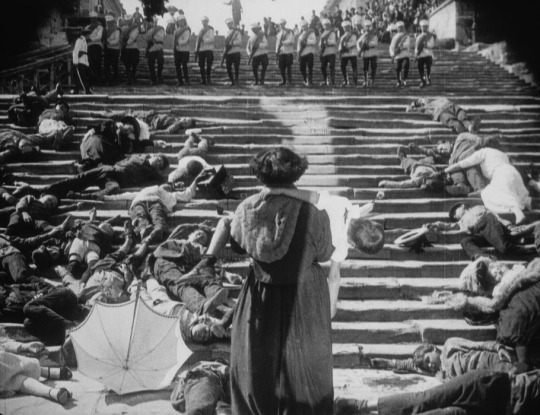
View On WordPress
#Battleship Potemkin#Battleship Potyomkin#black and white cinema#cinema#Drama#Early Cinema#Film Reviews#full film#Grigori Aleksandrov#Historical#Nina Agadzhanova#PT&A#Sergei Eisenstein#Thriller#Vladimir Barskiy
1 note
·
View note
Text
Someone said they ship Grigor and Catherine. I actually wouldn’t mind it. Makes sense to me since both loved Peter and Grigor is supposedly based on the historical figure Grigory Potemkin who was Catherine’s favorite.
45 notes
·
View notes
Note
Three interesting Russian history facts!!?
Russian history is so interesting that it's hard to limit it to just 3.
The Soviets tried to abolish money...to disastrous results. During the Russian Civil War, the newly created USSR was breaking the bank trying to fund the Red Army, to the point of the early Ruble suffering from 11,000% inflation by 1922. But the Soviets weren't all that panicked by the implosion of the currency, because some were convinced that the new Communist society was going to be classless, stateless, and moneyless. There were ideas during the Civil War to replace money with a work-in-kind barter system, where your labor was the means by which goods and services were traded. Work at the factory, and the factory worker receives food, housing, and services instead of receiving a wage. And of course this received huge backlash by critics in the soviet government for sounding an awful lot like serfdom, and the Red Army eventually resorted to taking food and supplies at gunpoint due to the Ruble being worthless as a means to purchase such things. This never truly got off the ground though, and a moneyless society was backtracked on very quickly and a state bank was established for the USSR in 1922 after the first bank was shuttered in 1920.
The first spacewalk, while a huge accomplishment in the Space Race, was done in an an almost Macgyver-like way that was incredibly reckless and nearly ended in disaster. The Soviet Space Program was tasked with conducing the spacewalk by the Politburo in 1965, but the problem was that none of their spacecraft had an airlock that could open and close in space without risk to the spacecraft. So scientists were rushed to create an inflatable airlock strapped to the Voskhod 2 door to allow for a balloon tunnel that would act as an airlock. This worked in getting Alexei Leonov out of the spacecraft to do the first spacewalk, but he had immense trouble getting back in as his suit inflated in the vacuum of space, making it impossible for him to get back inside. After a few minutes of struggling to get back in the spacecraft, Soviet television cut off all broadcasting in fear of airing a cosmonaut dying on TV, but Leonov found a way to get through by letting the air out of his suit in order to become small enough to get through. He lost so much air that he risked suffocating, but he managed to get back in the spacecraft and accomplish the mission. 3. Catherine the Great did not officially remarry after ousting her husband, Peter III from power, but she probably had a second husband in Field Marshall Grigory Potemkin. It's known that the two were intimate, but personal correspondence has them calling the other 'my wife' and 'my husband' respectively, and was actually quite the scandal back in 18th Century Russia! Potemkin was accosted with accusations of receiving special treatment by Catherine and using his intimate relationship with her to advance his military career, and his own personal jealousy towards the power that Catherine held over him as Tsarina caused them to have a romantic falling out.
2 notes
·
View notes
Text

Catherine the Great
Artist: Fedor Stepanovich Rokotov (Russian, 1736-1808)
Catherine the Great (1729 – 1796)
Catherine II was Empress of Russia for more than 30 years and one of the country’s most influential rulers.
Sophie Friederike Auguste von Anhalt-Zerbst was born on 2 May 1729 in Stettin, then part of Prussia (now Szczecin in Poland), the daughter of a minor German prince. In 1745, after being received into the Russian Orthodox Church, and changing her name to Catherine, she married Grand Duke Peter, grandson of Peter the Great and heir to the Russian throne.
The marriage was unhappy, but the couple did produce one son, Paul. In 1762 Catherine's husband became Tsar Peter III but he was soon overthrown with Catherine being declared empress. Peter was then killed shortly afterwards and it is not known whether Catherine had a part in his death. She subsequently had a series of lovers whom she promoted to high office, the most famous and successful of whom was Grigori Potemkin.
Catherine's major influences on her adopted country were in expanding Russia's borders and continuing the process of Westernisation begun by Peter the Great. During her reign she extended the Russian empire southwards and westwards, adding territories which included the Crimea, Belarus and Lithuania. Agreements with Prussia and Austria led to three partitions of Poland, in 1772, 1793, and 1795, extending Russia's borders well into central Europe.
Catherine began as a political and social reformer but gradually grew more conservative as she got older. In 1767 she convened the Legislative Commission to codify Russia's laws and in the process modernised Russian life. She presented the commission with her Nakaz, (or 'Instruction'), a strikingly liberal document that presented the empress’s vision of the ideal government. The commission produced no desired results and the outbreak of war against the Ottoman Empire in 1768 provided a good opportunity to disband it.
The Pugachev Rebellion of 1774-1775 gained huge support in Russia's western territories until it was extinguished by the Russian army. Catherine realised her heavy reliance on the nobility to control the country and instigated a series of reforms giving them greater control over their land and serfs. The 1785 ‘Charter to the Nobility’ established them as a separate estate in Russian society and assured their privileges. Catherine therefore ignored any concern she may previously have had for the plight of the serfs, whose status and rights declined further.
Catherine's main interests were in education and culture. She read widely and corresponded with many of the prominent thinkers of the era, including Voltaire and Diderot. She was a patron of the arts, literature and education and acquired an art collection which now forms the basis of the Hermitage Museum.
Catherine died in St Petersburg on 17 November 1796 and was succeeded by her son Paul.
2 notes
·
View notes
Text
Putin will soon turn his war machine on Britain
THE TELEGRAPH
Comment
Putin will soon turn his war machine on Britain
The Kremlin holds us responsible for its failures and will, at some point, attempt to exact its revenge
Ben Wallace
26 August 2024 • 6:00pm
In October 2022, in the dead of night, specialist troops and officials from Moscow slipped into St Catherine’s Cathedral in Kherson and exhumed the bones of famed 18th-century Russian commander Grigory Potemkin. He was a favourite of Empress Catherine the Great and played a critical role in the annexation of Crimea in 1783.
No one knows where they have gone. Perhaps Moscow or Crimea. But the removal was on the orders of Vladimir Putin. If you have ever wondered what drives the Russian president, this single act should give a strong indication. It is history, and Russia’s place in it.
One of the battles I had with the national security establishment in the years up to February 2022 was to persuade them that, despite the intelligence reports and the “wise heads”, Putin was not driven by logic, nor a passion to turn his country into a modern, outward-looking power. He was motivated by revenge, legacy and romance.
He and his Siloviki (past and present securocrats from the KGB and FSB) do not accept that they were the culprits behind the Soviet Union they inflicted on the Russian people. They believe they were the victims of a Western plot. Were it not for the West’s version of history, Russia would be considered to have won the Second World War single-handedly. The Cold War would never have needed to happen because Eastern Europe, including East Germany and Poland, would have wanted to remain pressed to Moscow’s bosom.
The bizarre essay Putin personally wrote in June 2021, entitled The Real Lessons of the 75th Anniversary of World War II, desperately twists facts, ignores events and casts Russia as the saviour of the world. He claims that the Nazi–Soviet pact that led to the invasion and dismembering of Poland was to the UK’s benefit.
In trying to recast Russia’s role in the Second World War, Putin lays blame squarely with Britain and France, and completely distorts the Molotov-Ribbentrop pact. He makes no mention of the massacre of 20,000 Poles at Katyn by the Red Army and secret police in 1940, nor the fact that before the invasion of Poland, Russia trained with the Wehrmacht and sold tanks to them. His essay is worth a read, if only to get a sense of the man.
But don’t expect reality. Expect excuses. Almost a year later, Putin penned another essay: On the Historical Unity of Russia and Ukrainians. It reads like a mix of Mein Kampf and a Walter Scott novel: destiny, ethnic nationalism and romance combined into an essay. It would be too easy to discard, but it is an essay that held all the clues about what was to happen next.
How sad that so many “Russian experts” in the Foreign Office, Quai d’Orsay or Foggy Bottom missed it. The aftermath of the Iraq war left intelligence services too cautious to make judgment calls without their product being washed through matrixes and seniors. Often the middle ranking intelligence officer who has lived and breathed the enemy for 20 years is kept so far in the background that ministers don’t get the instinct or judgment they really need.
Sir John Chilcot produced intelligence analysis that was thorough but it also regularly removed the “human factor”. Too often we assess intelligence through a lens that is a reflection of our own motivations and behaviours rather than those of our adversaries.
But it is also the job of politicians to understand people and their motives. Politicians who cannot read a room make lousy politicians. Leaders who cannot “feel” the currents in international relations shouldn’t be leaders.
When I went to Moscow, barely 10 days before the invasion, to meet the Russian defence minister Sergei Shoigu and General Valery Gerasimov, I didn’t go to read a script, I went to read my adversaries. I went to see how deep the lies went, how big the egos were, what motivated them and the behaviour of the subordinates around them.
As I left I remember commenting to General Gerasimov that I was struck by how his military doctrine had “swapped mass for readiness and mobilisation”. At that moment another General leaned over to add: “and ruthless intimidation”. The mask had slipped. Most telling of all was the comment from General Gerasimov to me in the hallway. “Never again will we be humiliated. We used to be the fourth army in the world, now we are the first or second. It is us and the Americans.”
These men at the top of Russia see themselves as rewriting history, by correcting the humiliation they felt at the end of the Cold War and settling scores for hundreds of years. While Russia is doing a very good job of, yet again, humiliating itself through its own actions, we should realise that in Putin’s version of history it is Britain, not the US, which is at the heart of Russia’s failures.
In Putin’s warped worldview, we were behind the Crimean war and defeat of the Czars, we were behind the rise of Hitler, we were behind the counter-revolution and our espionage was behind the end of the Soviet Union. Britain is in Putin’s crosshairs. One of the most senior members of the Russian Siloviki recently commented: “We know Britain is behind the invasion of Kursk”. We weren’t.
Make no mistake, Putin is coming for us. We must be prepared for the inevitable.
Rt Hon Ben Wallace is a former secretary of state for defence
2 notes
·
View notes
Text
Birthdays 10.12
Beer Birthdays
Janet Fletcher (1956)
Luc De Raedemaeker (1971)
Neriah Davis; St. Pauli Girl 2001 (1972)
Five Favorite Birthdays
Aleister Crowley; English occultist (1875)
Deborah Foreman; actor (1962)
Hugh Jackman; actor (1968)
Sean Patrick Flannery; actor (1965)
Ralph Vaughan Williams; English composer (1872)
Famous Birthdays
Jane Sherwood Ace; comedian (1900)
Susan Anton; actor (1950)
Matsuo Basho; Japanese poet (1644)
Kirk Cameron; actor (1970)
Alice Childress; writer (1920)
Art Clokely; animator (1921)
Emily Deschanel; actor (1976)
Paul Engle; writer (1908)
Dick Gregory; comedian (1932)
Samuel Elmer Imes; chemist, physicist (1883)
Jane Krakowski; actor (1968)
Martie Maguire; country singer (1969)
Samuel "Sam" Moore; pop singer (1935)
Jean Nidetch; Weight Watchers founder (1923)
Luciano Pavarotti; Italian singer (1935)
Grigory Potemkin; Russian general, politician (1791)
Jane Siberry; singer (1955)
Joe Simon; comic book artist (1913)
Todd Snider; country singer (1966)
Elmer Ambrose Sperry; inventor (1860)
Michalle Trachtenberg; actor (1985)
George Williams; YMCA founder (1821)
1 note
·
View note
Note
I'm writing a story where a nobleman is in love with a servant. The noble is kinda naive and a bit of a Himbo and romantic. He wants to give his lover expensive gifts, because he knows his lover desires them, but his lover is concerned about reputation and possibly gaining the reputation of someone sleeping their way to the top (plus is aware of how fickle some nobles can be, so if his noble lover loses interest he loses all of the protection so he can't rely on their relationship)
What are expensive items that might be conspicuous enough to cause an issue between them? (I know in some eras certain items were illegal for lower classes to own, and that would work great for this, but I can't find good examples)
Plenty. There's positions within the household or at court which can elevate his lover, there's material gifts such as fine clothes, jewellery or horses or there's estates and noble titles. Many monarchs got into hot water for the lavish gifts bestowed on their lovers:
Edward II and Piers Gaveston (later High Despencer possibly)
James I & VI and George Villiers
Charles II & all his mistresses (but Barbara Villiers perhaps most)
Catherine II and Grigory Potemkin
12 notes
·
View notes
Text
BONUS ROUND 2: The Royal Favourite Rumble
The main poll is all fun and games, but let us not forget that the charm of the Romanov dynasty is not just about the guys with the crown of Monomakh. In fact, some of them might outright pale in comparison to the colourful characters in their vicinity. And this bonus round is dedicated to exactly such men-behind-the-man (or a woman, or a child). Alas, none of these (with one exception) are official dynasty members, but we'd be remiss if we didn't also celebrate them, and their contributions to the most dramatic dynasty of Early Modern and Modern Europe.
And oh, before anyone asks - Rasputin was disqualified for being vastly more famous than any other person on this poll. No other reason. If you miss him so badly, there are several other shady clergymen one might turn to...
OUR CONTESTANTS
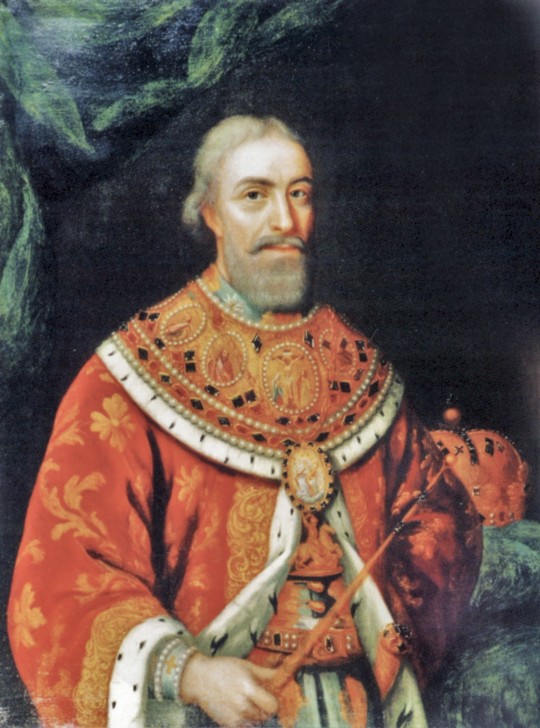
Patriarch Filaret (Fyodor Nikitich Romanov) - Also known as the ACTUAL first Romanov ruler.
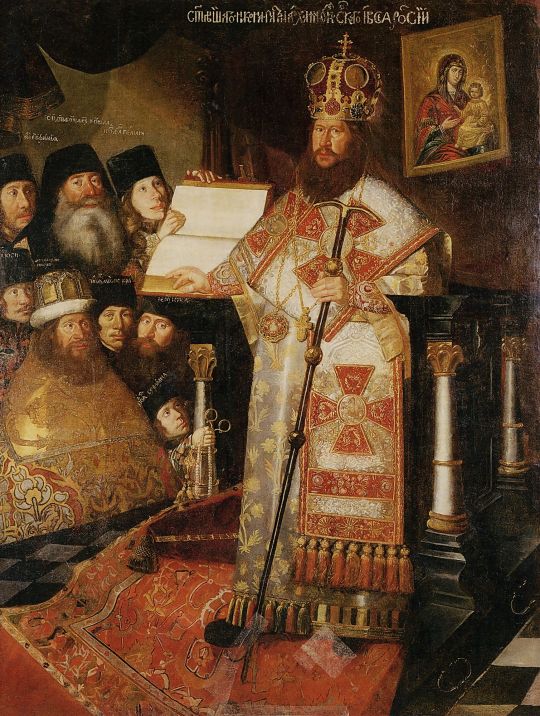
Patriarch Nikon (Nikita Minin) - The orthodoxy's biggest drama queen.
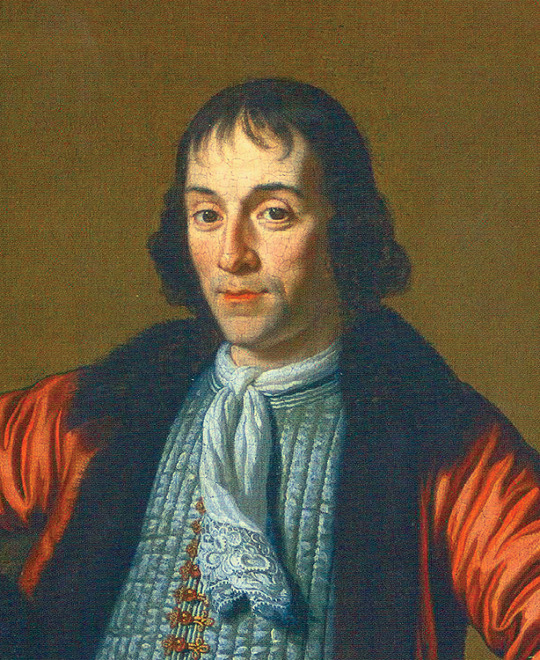
Alexander Danilovich Menshikov - Boy went pretty far from (allegedly) a pirozhki seller. And by far we mean Siberia.

Ernst Johann Biron - You know he was an upstanding gentleman just from the fact he was the favourite person of Anna Ivanovna.
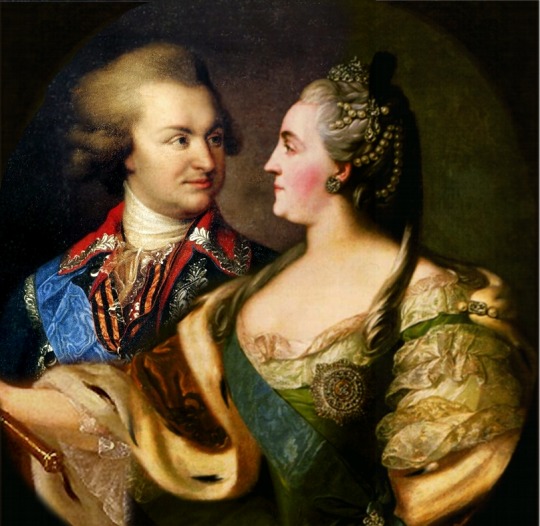
Grigory Alexandrovich Potemkin - The reports of his artificial villages were greatly exaggarated. Which is surprising considering how hard exaggarating about this dude is.
***
2 notes
·
View notes
Text

The Dome Hall of the Tauride Palace, the huge St. Petersburg residence of Prince Grigory Potemkin-Tavrichesky built in the end of the XVIII century.
Even before the revolution, the palace housed the State Duma of the Russian Empire, and nowadays it is home to several organisations, including the Interparliamentary Assembly of the CIS and the Council of Legislators of Russia.
2 notes
·
View notes